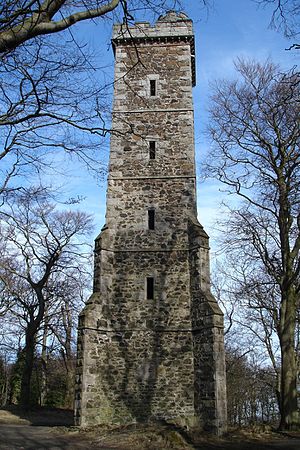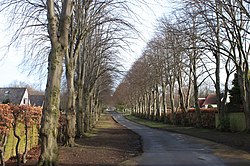Corstorphine Hill

Corstorphine Hill is one of the hills of Edinburgh, in Midlothian, named for nearby village of Corstorphine. There are traditionally said to be seven hills in Edinburgh, in reference to the Seven hills of Rome, but this figure is debatable, and as the city has expanded, even more so.
Corstorphine is a long ridge shaped hill, mostly sheathed in broadleafed woodland – the Corstorphine Woods. There has been though extensive development on the south side of the hill, including Edinburgh Zoo. Much housing has been built on the lower slopes, and houses in other parts of the city have been built using stone quarried from Corstorphine Hill.
Barnton Quarry, at the north end of the hill, was the site of a war-time radar station and cold-war nuclear bunker. Part of the hill is adjacent to the neighbourhood of Clerwood where there the Beachgrove Garden, a walled garden, has been laid out: it was featured on the BBC television programme The Beechgrove Garden and was awarded the first Green Pennant Award in July 2009. On the east slope is Murrayfield Golf Course and the suburb of Craigcrook.
On the top are two radio masts, and also a tower dedicated to Sir Walter Scott. There is also some evidence of ancient settlement here, possibly a hillfort of some kind. Cup marks have been found on the hill.
The Corstophine Hill Local Nature Reserve is now part of the Edinburgh section of the extended John Muir Way.
Corstorphine Hill Cemetery

Corstorphine Hill Cemetery lies on the lower western slopes of the hill and is now enveloped by housing.
The cemetery dates from the 1930s and was in private ownership until it was acquired by City of Edinburgh Council under compulsory purchase powers. It is of note due to its incorporation of a woodland cemetery area and due to a large number of Polish war graves from the Second World War.
Outside links
| ("Wikimedia Commons" has material about Corstorphine Hill) |
- Location map: 55°57’6"N, 3°16’18"W
- Friends of Corstorphine Hill homepage with information on the geology, botany, and archaeology of the area.
